Outlawed by NASCAR: - 1957 Oldsmobile J-2
In 1957, Oldsmobile's J-2 Package Set The Pace
09/23/2018


Like an awakening dinosaur, the American auto industry was coming to the realization, in 1956, that horsepower, and not just acres of chrome, helped to sell cars. It was a dizzying time, with Chevrolet's small-block V-8 and Chrysler's first-generation Hemi replacing the flathead Ford as the performance engine of choice. People were now buying, rather than building, their drag cars. In the South, the nearly stock NASCAR Grand National circuit was a regional phenomenon.
At Oldsmobile, it was crunch time. Company CEO J.F. Wolfram knew his brand-which had made some inroads into the nascent performance market-was in the hole when it came to making serious speed. For example, the 1956 Olds had 38 more horsepower than its 1955 counterpart, but was actually slower to 60 mph due to its ballooning girth. Oldsmobile's best for 1956 was a 324-cu.in. OHV V-8 with 230hp, but that was woefully short of Chrysler's 354-cu.in. Hemi, with 10.1:1 compression and 355hp, that was laying waste to the Grand National fields that year in Carl Kiekhafer's team of 300Bs. In the meantime, Chevrolet had developed its landmark small-block V-8, and Ford, in arrears since the flathead's supplanting, was actively exploring supercharging.
Action was clearly needed, and in a hurry. Brand prestige was going to be bludgeoned otherwise. An image-rescue team of engine designers was thrown together, and it included Bill Holt, now the last surviving member of the group that developed Oldsmobile's J-2 Rocket triple-carburetion package for 1957, a little-known story of achievement overcoming the double demons of cost and time.
"It was right in the middle of that era where everybody was horsepower crazy," said Holt, 91, who still has solid recollection of the events that led up to the J-2's creation. He started his Oldsmobile engineering career in 1941, in the engine department, and stayed at it for 30 years except for designing automatic cannons during World War II. When civilian production resumed, he was part of the engineering group that built Oldsmobile's first high-compression V-8, which bowed in 1949.
"Right after the war, we decided to go to a V-8 with overhead valves, and that was called the Rocket. It was quite a departure from anything Oldsmobile had ever done before. That was the start of the golden days of the horsepower race during the Fifties," he said.
It's altogether fitting that we interviewed Holt on this particular car. You see, this 1957 Golden Rocket 88 Holiday two-door hardtop, with the J-2 setup and only a few more than 30,000 actual miles, is owned by his daughter and son-in-law, Jan and Tom Hummer. When it comes to Oldsmobiles from 1957, the hardtop was the second-most-popular body style, with 49,187 units produced. The best estimates for cars fitted with the J-2 option vary, however, between 2,000 and 2,500 during 1957 and 1958, the only two years the tri-power setup was offered.
Enough paper has been expended on writings denigrating the melodramatic excesses of late-Fifties cars and their extravagant styling. Regardless of your opinion on the 1957 Golden Rocket's (thusly dubbed in honor of General Motors' forthcoming 50th anniversary) appearance, rest assured this is a muscle car in every sense of the word, built expressly to race under the era's NASCAR regulations that mandated largely stock cars. The Hummers, die-hard Olds fanatics, are fully aware of their hardtop's place in American performance history.
"Other than the original high-compression V-8 (of 1949), this was actually the first real muscle or performance car that Oldsmobile built," Tom said. "The whole selling point of this car, with the J-2 package, was power and racing."
Produced first with 303 and later 324 cubic inches, the Rocket V-8 became a prolific winner in NASCAR during the early and mid-Fifties in the hands of Buck Baker, Red Byron and Curtis Turner, taking two straight Southern 500s before the competition caught up. It quickly became obvious that single carburetion wasn't going to cut it in the evolving Grand National division for very long. The solution, coupled with a displacement advance to 371 cubic inches, was the adoption of triple carburetion atop the Oldsmobile intake manifold, along with a slight compression bump to 10.0. The inline arrangement placed a choke-equipped Rochester 2GC two-barrel in the center, with a nominal flow of about 280 cfm, assisted at the front and rear by Rochester 2G two-barrels capable of flowing 290 cfm. In normal driving, the engine was fed by the center carburetor, but once enough poundage was planted on the pedal, the vacuum-operated secondary carburetors snapped open, allowing the big-inch Olds to swill a hearty 860 cfm, or thereabouts, of the oxygen-hydrocarbon cocktail. The consequence: The 371's normal output of 277hp got kicked to 300, with a corresponding torque increase from 400 to 415 foot-pounds.
This meaty powertrain is clothed in one of the most memorable body styles in Oldsmobile's history, a one-year-only fling with a wraparound three-piece rear-window treatment that harked back, in a somewhat detached or perhaps Fifties-exaggerated manner, to the Forties styling cue of separating the rear window with plated straps. A "ridge" on either side of the main rear window ran upward into the roof. Oldsmobile also adopted unusual barrel-shaped fins tipped with ovoid taillamps, and reverted to its 1954 practice of applying a downward-and-back angled spear to the quarter panel. Up front, chrome-hooded headlamps were set into fenders topped with-surprise!-tiny rockets above a downturned, sour-puss grille that is curiously reminiscent of the indifferent smiley face on the old "Have a Nice Day" buttons.
Tom Hummer has owned an assortment of Oldsmobiles, but despite his family connection to the J-2 package, hadn't been actively looking for one. But in 1995, while making a stop at the season-opening Kruse spring auction in Auburn, Indiana, he spotted this Golden Rocket 88 Holiday sitting in the queue awaiting a turn in the auction ring.
"I looked at the paperwork and saw that it had been an Oklahoma car, that there was no rust, that it still had its original trim and it had factory air," he remembered. "Then I opened the hood and saw that it had the J-2. I had to have it, but I didn't have any real cash because I went there originally just to go to the swap meet and vendor area. I had my credit card with me, but the car was $10,000. So I went into the auction office, and MBNA was set up there, and within about 20 minutes, I had a $10,000 loan."
Hummer owns and operates an auto body shop, Tom's Auto Body, in Dimondale, Michigan, appropriately close to Oldsmobile's home turf of Lansing. He's long been into 1957 vintages of the historic marque, owns a 1957 Super 88 convertible and even headed the Oldsmobile Club of America's chapter for 1957 owners for nine years. He has executed his share of restorations over the years, but this Golden Rocket, whose 30,000-mile odometer reading was apparently genuine, required unpredictably little effort to get into its current show condition. He guesstimated that the J-2 car was in 3- condition when he bought it at Kruse. One of the most significant areas that needed attention was the right quarter panel, where a bumper crease had been clumsily pulled out and bondoed. After straightening the sheetmetal, he MIG-welded the holes. Speaking of bumpers, one was caved in and had to be replaced with a donor from a parts car. Hummer did the metalwork himself and sent both bumpers out to be triple-plated. Other than that, the car's trim is original.
Given his long career of rejuvenating crash-crippled cars, it should surprise nobody that Hummer undertook the body renovation himself. That, as it happens, was a limited process other than fixing the quarter panel. He didn't even strip the body before refinishing it with three coats of Sherwin-Williams primer and a PPG Deltron basecoat/clearcoat color combination of Rose Mist and Victorian White. The chassis and suspension pieces were repainted in PPG enamel. The entire restoration needed, he estimated, 160 hours. The biggest out-of-pocket expenses were new U.S. Royal bias-ply tires, a replacement J-2 oil-bath air cleaner and a $100 tune-up at a local shop. Since then, it has reeled in a first-place award at the Oldsmobile Nationals.
Although NASCAR racers running J-2 Oldsmobiles made do with the standard column-shifted three-speed manual transmission, in keeping with Grand National rules that mandated largely stock cars, the four-speed Hydra-Matic transmission was the option of choice for many of the road-going cars. As Holt recalled, the progressive carburetor linkages were developed by the Oldsmobile transmission team, since they were directly linked to the Jetaway Hydra-Matic kickdown linkages. Meanwhile, the engine team had its own do-it-yesterday assignment, getting the air cleaner to fit beneath the new 1957 hood line, since the hoods were already being stamped at the body plants and couldn't be modified.
Even though the J-2 option was intended for racing, Oldsmobile intended to offer it as an option throughout its model lineup. You could order a J-2 station wagon just by checking off the option box. But Olds wanted to sell those cars by winning races, and fitted the J-2 for competition with solid lifters and adjustable rocker arms. They started looking for a "marque" driver, and found one in NASCAR pioneer Lee Petty, who had won the 1954 Grand National championship in a Dodge. His son, Maurice Petty, who was chief engine builder at Petty Enterprises in Randleman, North Carolina, for a generation, still remembers the friendly persuasion that preceded the switch to Olds.
"The Olds people came to us with a little deal, a little money," he said. "Hey, we had to live, and Dodge didn't offer us anything."
Petty, who now builds engines for NASCAR Craftsman Truck Series teams and regional short-trackers, emphasized the huge gap between the largely stock Grand Nationals of the Fifties and today's purpose-built Nextel Cup machines.
"Back then, the rules were pretty strict, so you really couldn't do that much to them. We'd do a basic blueprinting to the engine, give it a valve job, but that was about all they would allow you to do. It was a pretty good engine; better than what Plymouth or Dodge had that year, which was nothing," he said.
Oldsmobile's J-2 program came to a premature end when NASCAR, in one of the abrupt rules changes that still occur today, banned multiple carburetion partway through the 1957 season. Lee Petty stuck with a single-carburetor Olds through 1958 before heading back to Plymouth. By then, the street J-2 program was also done, as the industry moved, at least publicly, to endorse the 1957 Automobile Manufacturer's Association recommendation that they back away from supporting racing and high horsepower as a pro-safety gesture, however empty it may have been.
The legacy of those days, regardless, is immediately evident on the rare occasions when Hummer drives the Golden Rocket, which totals only about 100 miles annually. As he puts it, under normal circumstances, the Oldsmobile is docile and compliant, not very different from most American cars built in the second half of the Fifties. That, as you might imagine, changes when he decides to leg it.
"When you're driving on the center two-barrel, it's really like you're driving any other car," he explained. "Until you really kick it down. You have to get the accelerator down about three-quarters of the way, and because it's a vacuum-operated linkage, it takes a second for the other two carburetors to kick in. From a standing start, you really have to floor it. The whole selling point of the package was, you spent most of your time driving on the center carburetor. But when it does kick in, you can certainly feel the surge. I used to have a Corvette, and it had that same feeling, when you got on it at 60 or 70 mph, it would just press you back in the seat and take off. The J-2 is kind of like that."
"In terms of handling, I guess the best way to put it is, the faster you go, the better it floats. When you get into a corner, it's not as good as my '66 Toronado, in that it leans a lot into the curves," he said. "The brakes aren't good, and that was one of the drawbacks of the '57s. I've never tried it with this car, but I had a friend whose uncle had one, and he was driving it when a dog ran across the road, and he jammed on the brakes, and it wouldn't even slide the tires. The brake surfaces seem large, but the car is heavy."
Weak anchors aside, Hummer said it's indisputable that the J-2 constitutes as much a benchmark in Oldsmobile performance history as its groundbreaking high-compression V-8, and later, the 4-4-2. His father-in-law readily agrees.
"It was just one of those things. It was the Fifties, horsepower was king, and we had to have it," Holt said. "That J-2 was a going machine."
Owner's View
Long before he owned either one of his 1957s, his Toronado or his 1931 Model F-30 rumbleseat coupe, Tom Hummer and his wife Jan had a real jones for Oldsmobiles. It goes all the way, as he puts it, to "back in 1957, when I saw a new 88 in the showroom of Story Oldsmobile, which was then the biggest Olds dealer in Lansing. I still remember it cost $2,477, and I used to just drool over it."
He never specifically set out to own or restore a J-2-powered car, but acknowledges that, "In my case, it's kind of funny. My wife keeps telling me I'm like Tim the Tool Man, in the sense that I always want more power, although in the case of the J-2, maybe Dad had something to do with it, too."
Ask him about the demise of Oldsmobile after more than a century of history, and he quickly turns somber. "I'm not at all happy about it, to say the least. I think GM should have dumped Saturn instead and renovated the Oldsmobile brand. At least at Olds, they were innovators."
PROS AND CONS
Pros
Defines the term "alternative muscle"
Styling is bold, but not excessive
Recent prices don't intimidate
Cons
Prodigious curb weight
Reproduction parts scarce as free Krugerrands
Leave yourself LOTS of stopping distance
CLUB SCENE
Oldsmobile Club of America
517-663-1811
www.oldsclub.org
Dues: $40/year
Membership: 6,400
SPECIFICATIONS
Base price: $2,591
Options on car profiled:
J-2 induction system ($83)
Jetaway Hydra-Matic transmission ($215)
Air conditioning ($430)
Power steering ($100)
ENGINE
Type: OHV V-8, cast-iron block
Displacement: 371 cubic inches
Bore x Stroke: 4.00 inches x 3.69 inches
Compression ratio: 10.0:1
Horsepower @ rpm: 300 @ 4,400
Torque @ rpm: 415-lbs.ft. @ 2,800
Valvetrain: Hydraulic lifters
Main bearings: 5
Fuel system: Dual Rochester 2G two-barrel carburetors, single Rochester 2GC two-barrel carburetor, vacuum linkage
Lubrication system: Full-pressure, mechanical pump
Electrical system: 12-volt
Exhaust system: Dual
TRANSMISSION
Type: Four-speed automatic, dual fluid couplings
Ratios 1st: 3.96:1
2nd: 2.63:1
3rd: 1.55:1
4th: 1.00:1
Reverse: 4.30:1
DIFFERENTIAL
Type: Hypoid, semi-floating axles
Ratio: 3.42:1
STEERING
Type: Recirculating ball, power assist
Ratio: 22.7:1
Turns, lock-to-lock: 3.50
Turning circle: 43 feet
BRAKES
Type: Hydraulic four-wheel expanding drum
Front: 11-inch drums
Rear: 11-inch drums
CHASSIS & BODY
Construction: Welded steel body over I-beam channel frame with center X-member
Body style: Six-passenger hardtop
Layout: Front engine, rear-wheel drive
SUSPENSION
Front: Coil springs, anti-roll bar, tubular shock absorbers
Rear: Live axle, semi-elliptic leaf springs, tubular shock absorbers
WHEELS & TIRES
Wheels: Stamped steel discs
Front: 14 x 6
Rear: 14 x 6
Tires: U.S Royal bias-ply whitewalls
Front: 8.50 x 14 inches
Rear: 8.50 x 14 inches
WEIGHTS & MEASURES
Wheelbase: 126 inches
Overall length: 216.7 inches
Overall height: 58.2 inches
Overall width: 76.38 inches
Front track: 59 inches
Rear track: 58 inches
Curb weight: 4,119 pounds
CAPACITIES
Crankcase: 6 quarts with filter
Cooling system: 21 quarts
Fuel tank: 20 gallons
CALCULATED DATA
Bhp per c.i.d.: 0.80
Weight per bhp: 13.73 pounds
Weight per c.i.d.: 11.10 pounds
Wagons are arguably the most practical form of transportation. By extending the relatively low roofline of its sedan counterpart, wagons offer plenty of precious cargo space while still retaining a lower center of gravity for zippy handling and spirited driving whenever the urge may hit. Despite all the fun that can be had in a wagon, massive high-riding SUVs and Crossovers have taken over the modern-day automotive market.
The SUV trend is unstoppable and new wagon models are becoming scarcer as years pass. Back in 1975, sedans and wagons dominated nearly 80-percent of the U.S. vehicle market. More recently, new SUV and truck sales have climbed to around 80-percent since 2011, taking the place of smaller sedans and their longroof model varieties.
In the classic car market, wagons are rapidly gaining popularity. Like the old saying goes, “They don’t make them like they used to.” Classic wagons exude a style that isn’t seen in today’s automobiles and car enthusiasts are gobbling them up like candy. Here are 15 examples of what is available in the classic wagon market today.
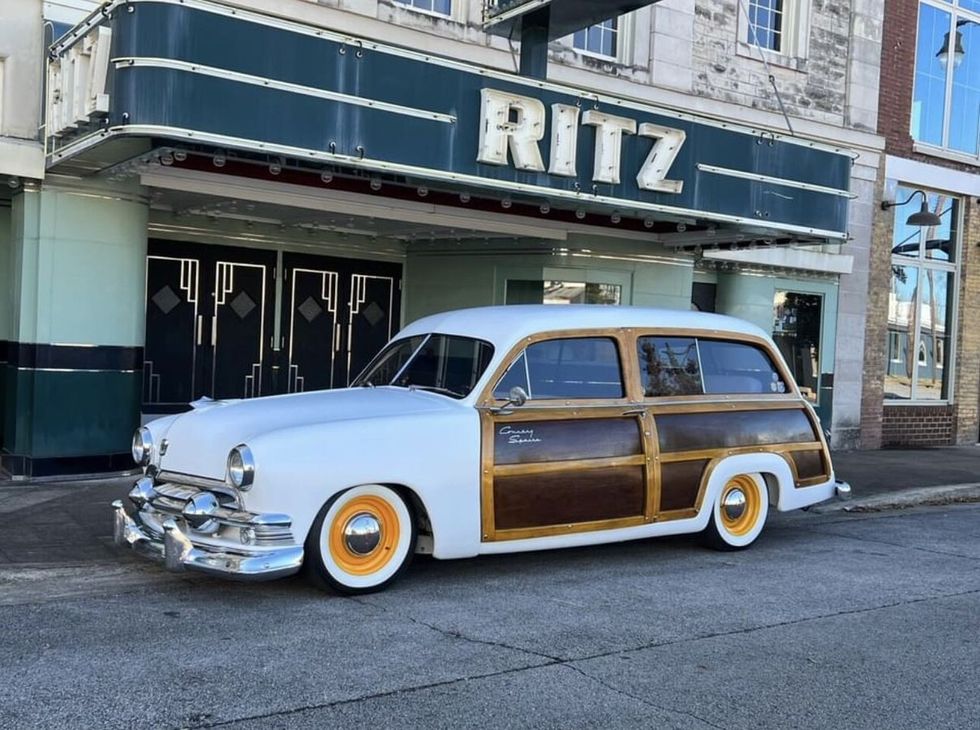
Everybody loves a classic woodie wagon! This two-door 1951 Ford Country Squire wagon still sports its original wood paneling, not that fake plasticky stuff seen on the more modern “wood” wagons. The seller states it is a fresh build that has only been driven 500 miles. A 350-cid Chevy Vortec Engine is hidden under the hood. Tasteful modifications include a Fatman Fabrications front end, an 8.8-inch rear end, power steering, four-wheel power disc brakes, and an all-new interior.
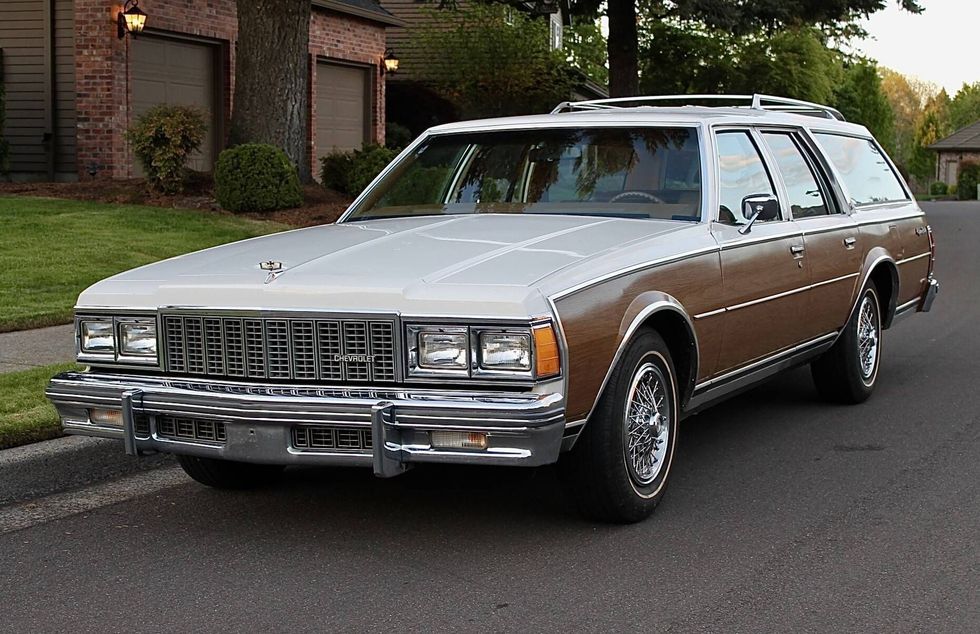
As stated in the auction listing, here’s a family hauler that would draw envious glances from Clark Griswold, this 1979 Chevrolet Caprice Classic Station Wagon is believed to be in original condition apart from maintenance and service requirements, according to the selling dealer, who acquired the woodgrain-trimmed wagon through an estate sale. There’s a 350 V8 under the hood and the seller notes service within the past few thousand miles has included new brakes, a new water pump and radiator, valve cover gasket, muffler, and more. Click here to see the full auction details.

“Experience the epitome of vintage charm and modern performance with the 1964 Mercury Colony Park, a California wagon that's been meticulously restored and upgraded to perfection. Underneath its classic blue exterior adorned with wood paneling lies a beastly 390-cid V8 engine, now equipped with a Holley Sniper EFI system for improved fuel efficiency and smoother power delivery. Paired with an automatic transmission, this wagon delivers a driving experience that's as effortless as it is exhilarating.”

This beautiful Brookwood underwent a professional frame-off custom restoration. It’s a restomod of sorts, still sporting its classic looks while implanting some modern creature comforts and technologies. It’s powered by a 480 horsepower LS3 engine paired with a six-speed manual transmission, for starters. Cruise to the classified to see more photos, plus the full list of custom goodies included in this immaculate 1959 Chevrolet Brookwood Nomad.
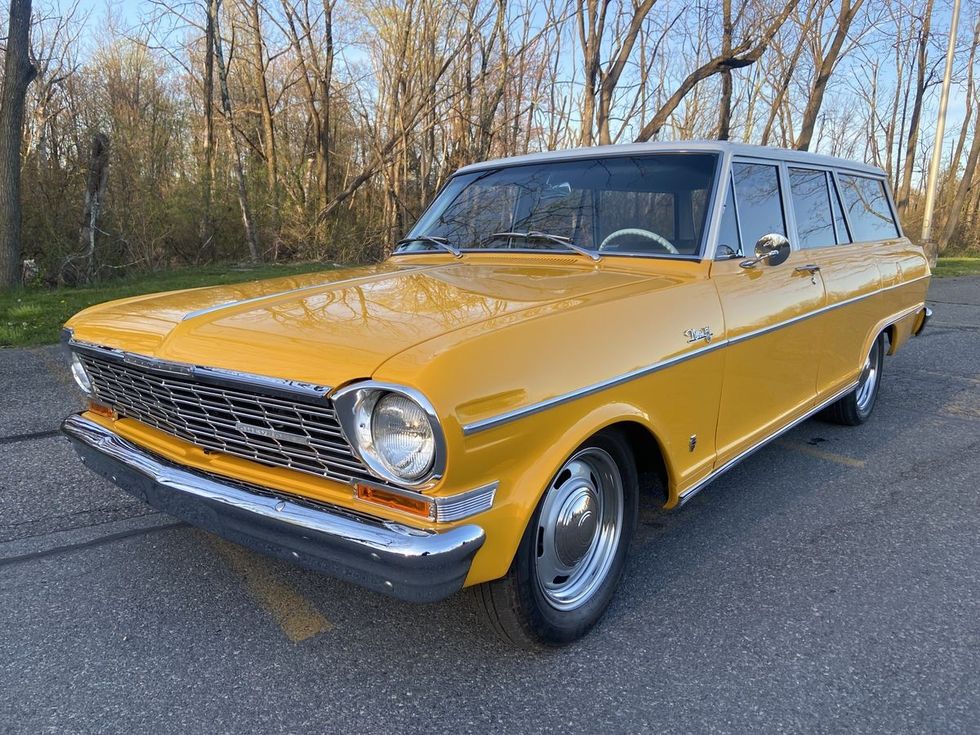
You’ll be hard-pressed to find a classic wagon exactly like this one-of-a-kind 1964 Chevrolet Chevy II Nova. Described as a mild restomod, this station wagon has just 1,000 miles accumulated since its frame-off restoration. The seller states that everything has been done on this car and it “rides, drives, and handles way better than you would expect; straight down the road with no shimmies, shakes, or vibrations.” The craftmanship on this V8-powered Chevy wagon is described as “simply spectacular.”
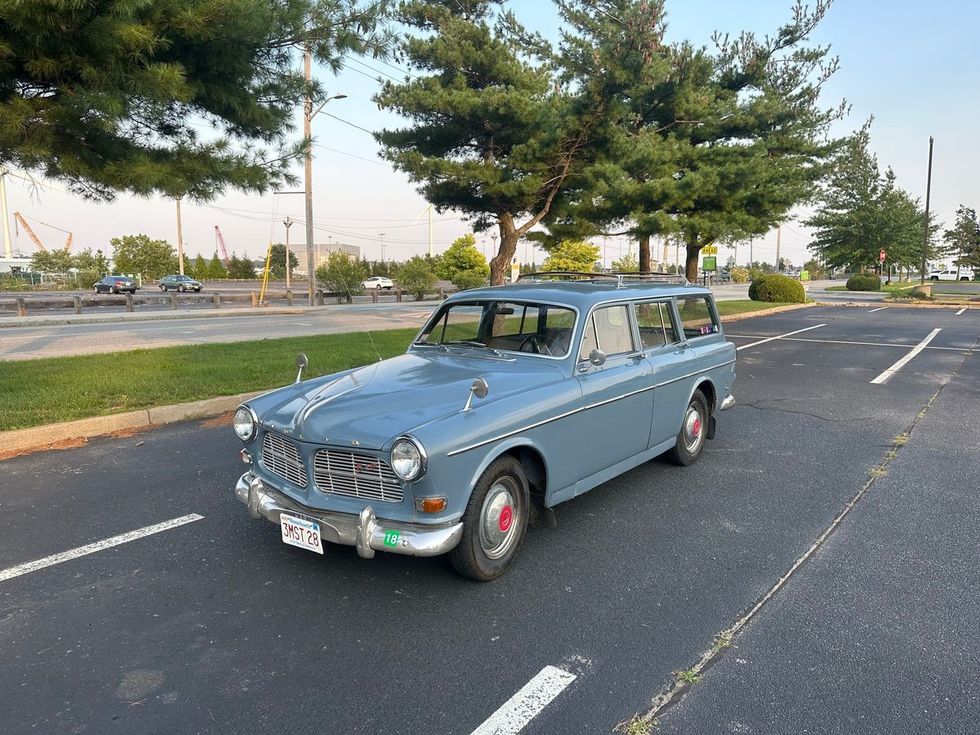
Volvo wagons are getting hard to come by, especially the 1960s-era cars. The seller states that this two-owner, mostly original 1963 Volvo 122S B22 was used as a daily commuter until a few years ago, has been regularly serviced, and is in good running condition with a recent fuel system overhaul. The original exterior does have some blemishes and surface rust, but the seller assures that “With a fresh paint job, she would really turn heads!”
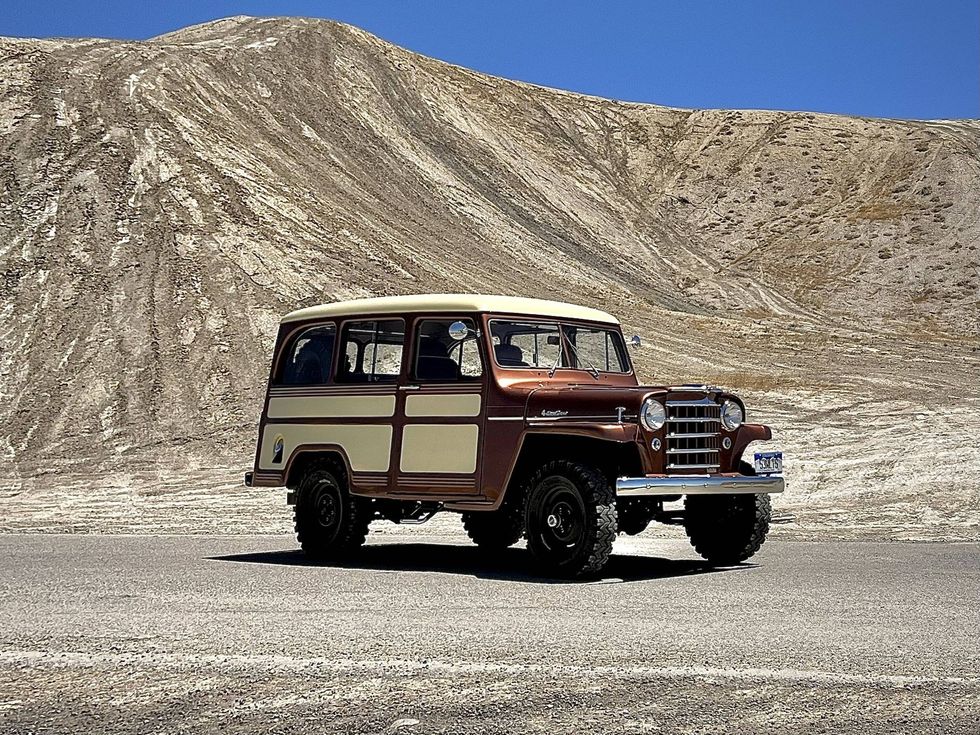
“There are refurbishments and restorations, and then there’s the kind of treatment this 1953 Willys Station Wagon has received. The work is described as a minutely detailed body-off restoration that has left the wagon in better-than-factory condition. Among the many non-production upgrades said to have been performed on this Willys are heated leather seats, a lamb’s wool headliner, a Pioneer audio system with Bluetooth capability, map lighting, and USB charging ports. The Willys is reported to have a replacement F-head engine of the same year and displacement, now rebuilt, and the wagon is described by the seller as free of rust.”

A muscle car in wagon form is what dreams are made of, especially when talking about the second-generation Chevrolet Chevelle SS. This example, a Placer Gold 1971 Chevrolet Chevelle SS Wagon, gets its power from a rebuilt 402 cubic-inch V8 producing 350 horsepower paired with a T-10 4-speed manual transmission geared with a 10-bolt rear end, plus other great features.
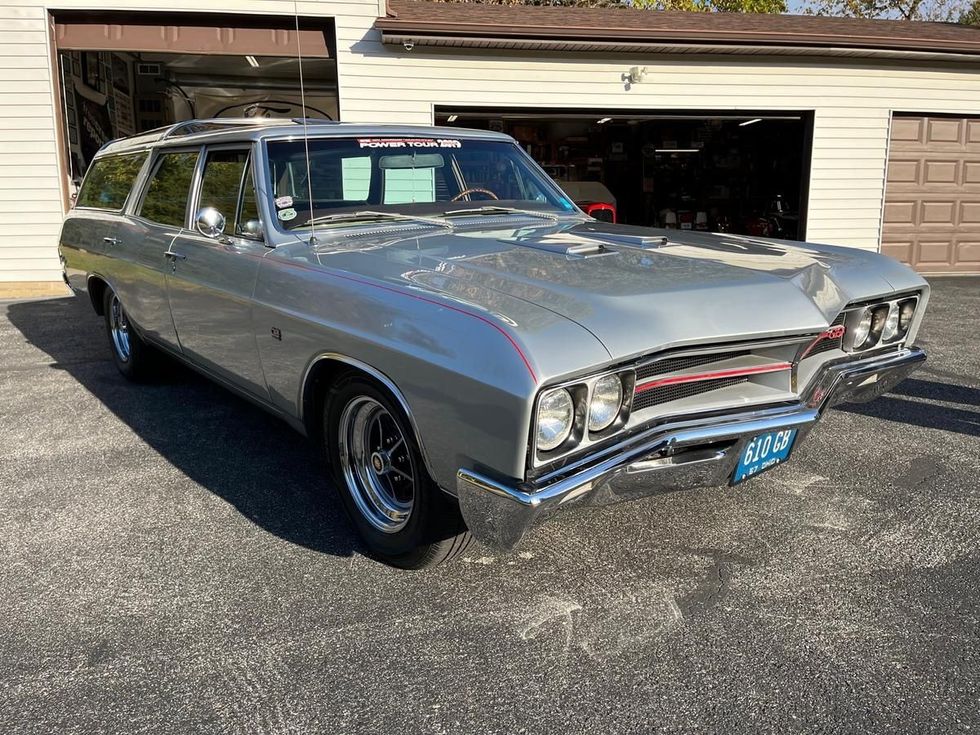
The sky roof (or panoramic roof) on this 1967 Buick Sport Wagon GS adds to this classic car’s luxurious feel. The seller states it is powered by a 350 cubic-inch small-block topped with four-barrel carbs and a Star Wars-style air cleaner. The wagon is described as rust free and ready to drive.

According to the seller of this custom 1956 Ford Parklane Two-Door Wagon, it is so clean that you can “eat off the door jams and spare tire well.” The mild custom sports a 312 cubic-inch V8 paired with an automatic transmission, plus loads of other goodies, including a custom interior. Take a close look at the photos supplied in the Hemmings Marketplace classified listing.
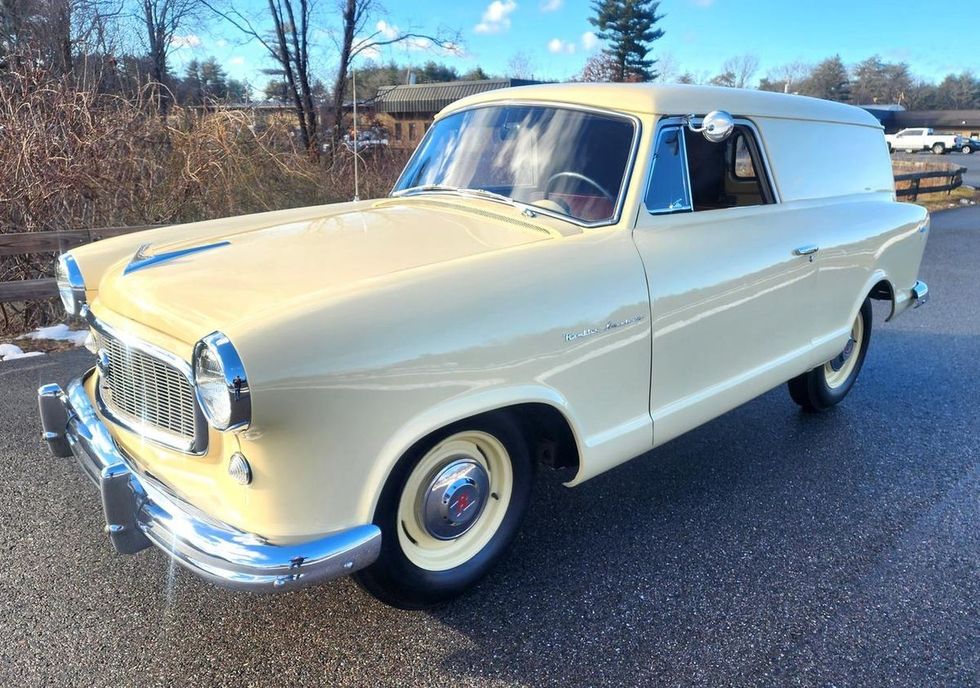
This extremely rare wagon is just one of only three examples produced, and the seller confirms that they do have the production records as proof. Previously owned and restored by the founder of the AMC club of America, the 1959 Rambler American Deliveryman Panel underwent what is described as an exceptional nut and bolt rotisserie restoration just a few years ago. It’s powered by an inline-six engine backed by a three-speed manual transmission, and the engine bay, among other details, is described as stunning.

The classic Chevrolet Bel Air embodies the American Dream of the late-50s, and its V8 engine signifies the era of American muscle. This elegant wagon is offered with an automatic transmission for easy cruising. The seller also states that the 1957 Chevrolet Bel Air is equipped with air conditioning, its classic AM radio, power brakes, and power steering.

If you’re searching for a wagon that will stop passersby in their tracks, look no further than this flame-adorned 1950 Oldsmobile. Under the hood you’ll find a powerful 5.7L Vortec 350 cubic-inch V8 paired with a smooth-shifting four-speed automatic transmission. The seller states, “this Oldsmobile Wagon is not just about looks and performance, it’s also equipped with a range of features designed to enhance your driving experience.” Get the full details here.

This unrestored 1959 Plymouth wagon shows 78,800 original miles on the odometer. The 318 polyhead Mopar engine is topped with a Holly two-barrel carburetor and exhales through a dual exhaust system. Don’t let the main photo of this beautiful machine on a trailer fool you: The seller states that the car is in survivor condition and it drives without issues. Check it out.

This two-door, six-passenger, V8-powered 1958 Edsel Roundup wagon is described by the seller as a no expense spared custom. The customizations were completed by its owner, Frank Montelone, alongside his long-time friend, the legendary George Barris of Barris Kustoms, which makes this custom wagon an incredibly rare find.
There are more wild wagons where these came from. As of this writing, there are around 50 classic wagon listings on Hemmings Marketplace. Take a look!
Ray pile was a part of the immediate post-World War II generation of hot rodders. During the war, he was a waist gunner in Boeing B-17 Flying Fortress bombers attacking Nazi-occupied Europe and afterward he returned to his home in Southgate, California. This is his car, the Pyle Special. Not much is known about its life before Ray got ahold of the Ford. It was just one of millions of Ford Model A’s produced for 1928-’31.
Just two years after the end of the war, an uncle got him set up running a gas station. That’s when the roadster comes on the scene, and with it, Ken Eichert, the father of current owner Chris Eichert and son of Ray’s benefactor-uncle.
Image courtesy of Chris Eichert
A mild-mannered, full-fendered roadster most of the time, one weekend each month the Pyle Special would transform into a race car bent on going as fast as possible on the dry lake beds northwest of Los Angeles.

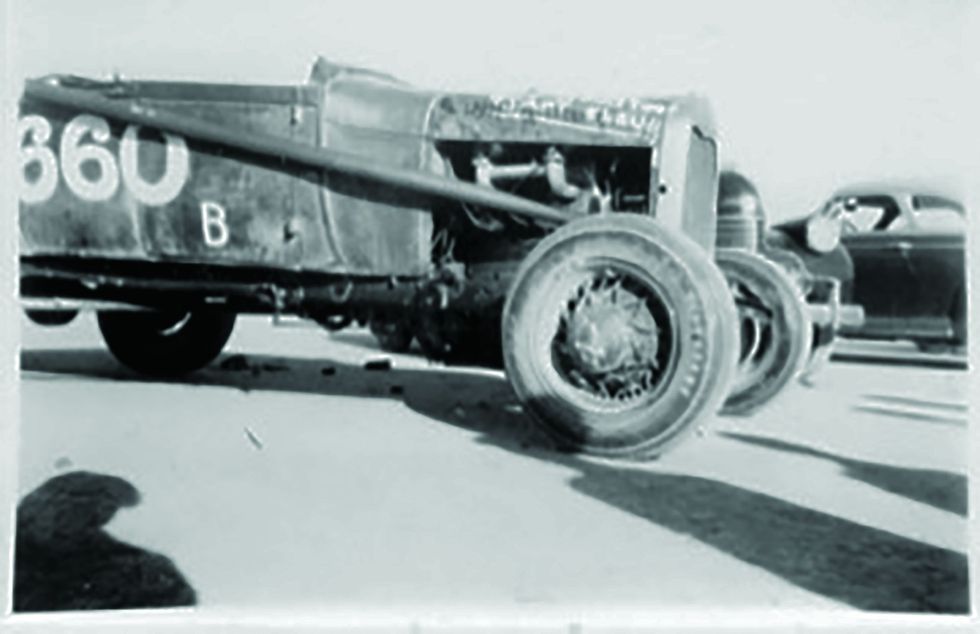

“Ray was my dad’s cousin on my grandmother’s side,” Chris says. Ken had survived a bout with polio earlier in life and was prevented from participating in most sports because of a bad leg. He discovered an outlet in the machines found at his older cousin’s shop and as an honorary member of his car club, the Gaters (note the intentional misspelling as a nod to Southgate).
“My dad was very active with Ray’s roadster. He tore it apart, worked on it, took off the fenders and installed the bomber seat for Ray to race on race day. From 1947 to 1949, Ray was going to the dry lakes with the Gaters, and the roadster was actually a dual-purpose vehicle: it ran full fendered on the street and was Ray’s get-around car, his family car, and then he would race it every month when they had a meet.”
The late hot rod historian Don Montgomery was adamant that the immediate post-World War II years represented the only pure expression of the hot rod: a true street/strip car that was driven by its owner/builder for transportation Monday through Friday and was stripped for racing on the weekends. Postwar racing for hot rods in Southern California circa 1946-’52 was largely either “the lakes”—meaning the dry lakes of the Mojave Desert, mostly El Mirage, or drag racing. At the tail end of the period, drag racing started to become formalized, on closed strips often comprised of aircraft runway infrastructure built for the war. Before that, acceleration contests were an informal activity done on public roads and facilitated by the popularity of drive-in restaurants.
Photo by Todd Ryden
This is the engine Ray raced at Santa Ana, originally built for him by Cook’s Machine Shop. Chris says it’s been drilled for full-pressure oiling, has had large valves installed, and had an unmarked but “really big” camshaft installed. It has since had fresh pistons and a milder cam installed. The Stromberg 81 carburetors are a smaller version of the 97, originally intended to equip 1937-’40 Ford 60-hp V-8 engines.



That three-faceted nature of postwar hot rods made them special and keeps them relatable today. Most roads in America are still suitable habitat for 1940s cars—whether they were new cars from 1947 or have been updated to 1940s technology. That ‘40s technology makes for a particularly satisfying operator experience—just automated enough not to be intimidating, but satisfyingly mechanical and interactive in all other respects. The sights, sounds, and smells are pure automobile, and the industrial design of every component says, “built right.”
Small wonder Chris decided to take the roadster back to how Ray had it. It even does a lot to explain why Chris’s father bought it off Ray in the mid-1960s, over a dozen years after it was last raced. It was far out of step with those times. It didn’t even have a flathead V-8. Ray had built the car to use four-cylinder power and its final engine had been a Model B unit, the 1932-’34 successor to the Model A four-cylinder and incorporating many of the popular modifications already done to make Model A engines suitable for high-performance applications.
“The motor that Ray raced with at the dry lakes was a four-banger with a two-port Riley,” Chris says. The Riley was an F-head design, or what the British and Harley-Davidson enthusiasts call “intake over exhaust,” meaning the exhaust valves retain their stock location in the block, but the intake valves are relocated overhead and actuated by pushrods and rocker arms. Even in flathead form, Model A and B four cylinders were respected for their off-the-line performance while the Ford V-8 was capable of greater top-end speed. An OHV or F-head conversion on a four-cylinder usually meant it was capable of keeping up with a flathead V-8 even at those higher RPMs. Chris would love to someday replicate that engine, which he and Ken discovered in derelict condition shortly after Ray’s death in 1987 and deemed unsalvagable.
The roadster’s final outings were to what was then Santa Ana airport. The first modern dragstrip began operation there in the spring of 1950 and Ray quit driving the Pyle Special about 1951. It didn’t move again until 1964 or ’65, when Ray sold it to Ken, who in turn held onto the car more as a keepsake than an active project. As a child, Chris would sneak into the freestanding garage where it was stored and sit in it and later it would provide plenty of father/son bench racing and swap-meet parts buying episodes.
Aside from one brief-but-memorable ride, the car sat in storage until 2007. By that point, it had suffered a couple indignities: its engine sold off to a friend’s speedster project and one fender and splash apron were brutally disfigured in a freak accident involving a large stack of tile.
“My dad was getting older. I told him I wanted to get the roadster going and he told me to bring it over. I took it completely apart and I cleaned off decades and decades of dirt. I actually saved some of it, thinking it was probably El Mirage dirt. I have two cigar vials full.”
That cleaning and disassembly venture was a crash course in postwar-era hot rodding.
Photo by Todd Ryden
The front axle was dropped back in the 1940s and installed on the roadster circa 1950. To further lower the roadster, the spring eyes were reversed on both the front spring and in the rear.




“Nothing was precisely done. It was a real trip to see what hot rodders did back then and how they put stuff together. It truly was like going back all those years. Then seeing how it evolved in the late ‘40s into the ‘50s in old pictures, as it became what it is today.
“I ended up buying the motor back from the friend with the speedster. I told him what we were going to do, and he did not hesitate to sell it back to us. I had a friend of my dad’s rebuild the motor.”
Chris then re-installed all the speed parts that had come from Ray, plus a few his father had collected along the way, notably twin Stromberg 97 two-barrel carburetors on an Evans intake and a Mallory dual-point distributor. Chris also discarded Ray’s rear-only mechanical brake setup for 1939 Ford hydraulic brakes contributed by a friend of his father. “That’s the kind of friends my dad had,” he says. “All his hot rod friends knew about the roadster and when I told them I was working on it, they gave him stuff.”
Once the roadster was going, there followed a whirlwind of father-son activity with it, culminating in the twin delights of a Hot Rod Magazine feature story of the still-in-primer roadster, and Ken getting to drive the roadster at El Mirage for the first time ever. Then, Ken died in 2011 and the roadster took another hiatus.
“After Dad died, it sat. I could not get the motor running for snot. I took it to three or four old guys who worked on old Model A’s, hot rod guys, they couldn’t get it running. I kept spending money to no result, so I mothballed it for another 10 or 12 years, from 2011 to about a year or so ago.”
Photo by Todd Ryden
“It’s a rattle can, but the coolest rattle can you could ever be in. I still drive it and have memories of my dad and wish he were there and could share the moments. Even though I didn’t know Ray, I think of him. He got this up to 116 mph and that’s a feat. I’ve probably gone no faster than 65 mph and it scared me, I couldn’t imagine doing 116.”



For help, Chris turned to a fellow member of the revived Gaters club, welder/fabricator and hardcore enthusiast of midcentury Americana, Randy Pierson.
“He’s got a period army tent, a period camp stove, he tows his roadster with a ’49 Merc four-door. The body on his roadster is all handmade. He is the pinnacle for our group who keeps us true to that era and what we do and what we don’t do and what we put our signature on as a club as far as being period correct.
“He did some body work (but he said it was one of the nicest Model A bodies he’d ever worked on). It was all hand welded, hand hammered, hand finished. We stripped off down to the color that was consistently across most of the body. He rewired it with cloth wire as it would it have been in period, and he really was meticulous to getting it back to as it was in 1947. We looked at pictures. He kept what he could keep and mimicked what needed to be done to make it true to its 1940s life.”
Also mimicking its 1940s life was the scramble to get it ready for race day. In this case, the West Coast iteration of The Race of Gentlemen, which is not a beach race but is instead held at Flabob Airport in Riverside, California, in the style of the original Santa Ana drags.

Although it still rides on a Model A frame, at some point the k-shaped crossmember from a 1932 Ford was installed, which stiffens the chassis slightly and provides built in mounts for the later transmission and floor pedals. Ray apparently lacked the tools to shorten the driveshaft, however, which pushed the engine and transmission forward slightly. During the rebuild, Chris and Randy moved the radiator back to its stock position to run an original-style hood.
Photo by Todd Ryden
“We found a bomber seat and just a couple weeks before the race, Randy had started to work on the motor to get it running and he too could not get it running right. He pulled it apart and he’s not a motor guy, but he knows enough, and one of his neighbors is an old hot rodders. We changed out the 97s to 81s because the 97s were a lot of carburetor for that little banger motor, especially in duals. Then he still had a hard time. We took out the cam, put in adjustable lifters, and at the very last second, we were trying to find a different cam for it, because we figured there was something going on with the cam. I asked a buddy if he had anything to go in my roadster and he sold me a cam and I sent all that up to Randy, who worked on it feverishly for a week to ship it back down for the races. He got it running and when he got to drive it down the street, he was surprised. ‘This thing has got it. This thing scoots.’ It runs really strong.”
That strong running paid off in a lot of fun at TROG West, giving truth to one more of Ken’s old stories.
“My daughter has a video of me racing a T/V-8 and I pass the camera behind the T, but by the time I get to the finish line, I’ve beat her. It brings back memories of my dad telling me ‘Yeah, that motor will beat some V-8’s.’ It’s one of those moments, again, of my dad’s stories from all those years ago having proof in their pudding. Those revelations keep happening.”
What’s next for this old racer? “I never did get it registered when I moved from California to Texas,” Chris says, “but I am going to get it registered.”
Hopefully, it will be back on the streets soon, paying tribute to that triple-threat nature of hot rodding’s golden era.
Photo by Todd Ryden
“We reproduced the tailpipe that’s on it from pictures. It’s built from 1938 driveshaft enclosures because of the taper they have at one end. When Ray was racing it, that’s one of the things my dad put on it every time, so that’s what we did when we were putting it back together. It’s got a killer, throaty sound to it.”

